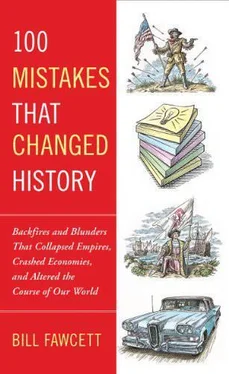The Black Plague first surfaced in Mongolia, spread to China, and was brought over to Europe on merchant ships. During the early thirteenth century, cats began to be looked at with suspicion. The pagan Egyptians had venerated them and the pagan Romans valued cats. The Catholic Church was determined to root out heretics and eliminate paganism in Europe. In medieval society, cats were already somewhat misunderstood for their aloofness and independent nature. If you do not handle kittens, they become quite feral as adults. That makes them good hunters, but wary of humans. Pope Gregory IX first made an association between cats and the devil. The Church focused on the Albigensians, a group the Church leadership suspected of worshiping the devil. During Satanic masses, it was alleged that the devil took the form of a black cat. It was said that the Albigensians were required by Satan to kiss the back side of the black cat during the mass. The concept of “a familiar” also coincided with the persecution of the Albigensians and other heretical groups during this time. A familiar was a supernatural being who could take many shapes, and it was believed to be something Satan gave to witches and other devil worshipers to facilitate evil acts. Cats were thought of as a common familiar. In fact, manuals that were developed to help authorities hunt witches often cited that ownership of a cat was compelling evidence that the cat’s owner was actually a witch.
During this time, if a person was declared a witch, he or she was condemned to burn at the stake. If this happened, the cat was burned along with its owner. Many commoners became afraid of being accused of witchcraft, so they killed or got rid of their own cats. Cats were slaughtered by the tens of thousands in cities and villages across Europe, and the domestic cat population came close to being eliminated.
Some in the aristocratic class were less vulnerable to the superstitions wracking Christianity. They kept their cats exactly because of the animals’ ability to reduce or eliminate the rat population in and around their homes. Of course, they had no idea that the rats actually carried disease, but having some of those cats in the homes of the aristocracy certainly helped keep the plague from wiping out many in the upper classes. The mass killing of cats preceded the arrival of the infected rodents, greatly compromising the barrier between humans and the rats.
Many people during that time believed that the devil granted to witches the power to exact revenge for any slight or threat. This made them, and their familiars, a source of fear. It was thought that a witch’s revenge could devastate large portions of a country. So when things went wrong, the witches and their cats took the blame. Between 1300 and 1700, persecution of witches was at its peak in Europe. It is not surprising that this persecution coincided with successive waves of plague, which wracked the continent.
The Black Death was certainly the most devastating of all of these plagues. Not only did it decimate the population, but it also was the catalyst for profound social and economic changes. In western Europe, landlords had to compete for peasant labor, providing increased wages or even freedom for the peasants. When peasants demanded higher wages, and the landlords refused, revolts broke out in England, Italy, Belgium, and France. Many historians have suggested that the roots of capitalism took hold at that time. The disease also had a profound effect on the Catholic Church. So many believers had prayed for deliverance from the plague and killed their cats. When those prayers weren’t answered, the power of the Church and its numbers declined, and a new period of philosophical questioning emerged. The resulting social upheaval started an era of contemplation and concentration on the arts, music, and literature. The Renaissance had begun.
If it weren’t for the domestic cat’s existence in Europe and the sheltering of those cats by the aristocracy there, even more than half of the population could have been wiped out when the Black Death peaked between 1348 and 1350. The disease had enormous social, economic, and religious consequences, including the end of feudalism and the rise of the Renaissance. It took Europe’s population several hundred years to recover from the devastating impact of the disease. And the severity of this loss could have been dramatically reduced had it not been for the fear-mongering of religious leadership at the time.
Some superstitions about cats, which started in the panic seven centuries ago, still remain. These include such baseless notions as crossing the path of a black cat bringing you bad luck, cats being a threat to newborns, and cats being familiars to devil worshipers. It is no coincidence that the more cats were demonized and the more their owners were viewed as possible witches and heretics, the more widespread the Black Death became. Cats were the first line of defense against the real carrier of the plague.
The Same Old Way
1415
In a show of British understatement, when asked to describe his victory at Waterloo over Napoleon, the duke of Wellington said, “He came at me the same old way and I beat him the same old way.” That description only somewhat fits the Battle of Waterloo, but it completely summarized the identical mistake made by two French kings in fighting against the English sixty years apart.
The first time the French made the mistake was at the Battle of Crecy. If being in the right always meant victory, then Edward III, the king of England, should have lost at Crecy—badly. A few years before, in 1327, the last of the Capetian line of French kings died. Edward III had perhaps the best claim to that throne. But the claim was sure to be contested by some of the most powerful French lords, and his success was far from assured. Since he was already king of England and could lose his control of the rich French duchy of Aquitaine, trying for the throne seemed like a bad idea. Edward instead supported Philip Blois, who became Philip VI. A few years later, Edward changed his mind and started what is now known as the Hundred Years’ War. (Which actually lasted 116 years.)
In 1346, Edward III landed in northern France. A city he owned in the south of France was under siege, and he hoped to draw most of the attackers away. The way he chose to attract their attention was to lead a chevauchée across France. The chevauchée involves leading your army across an area while burning, pillaging, raping, and torturing as much as possible. Edward’s army left devastation from the coast to near the walls of Paris. Another incentive for a chevauchée was that you also pillage anything of value, and the king got a large cut of the loot.
Philip and the rest of France were outraged at Edward’s raid. Thousands of knights, and every peasant they could arm, rallied to the king. Edward, with at most 11,000 men left, and fewer than 2,000 knights, found himself in the middle of a hostile France, pursued by perhaps 20,000 knights and 40,000 men-at-arms and armed peasants. He turned and ran for the Channel and safety.
The English backtracked as fast as they could; the French were often only a few miles behind them. Edward and his raiders almost got trapped against the Loire River but slipped over a ford Edward bribed a local peasant to show him. This gave his tired soldiers a short rest near the village of Crecy-en-Ponthieu. It was there, late in the day, that the French army of 60,000 caught up with his 7,000 archers, 2,000 knights, 1,500 skirmishers, and 500 lightly armored horsemen.
Edward formed up his outnumbered army into an arc, with one flank protected by a deep stream and the other by the thick trees of the Crecy Forest. It was only a few hours before sunset when the bulk of the almost formless mass of French knights and soldiers had gathered across a wide field from the English. In their front were about 6,000 Genoese crossbowmen the French king had hired to counter the English archers. Just as the French knights began to form up for an attack, there was a heavy thunderstorm. It drenched both sides and the ground in between them.
Читать дальше












